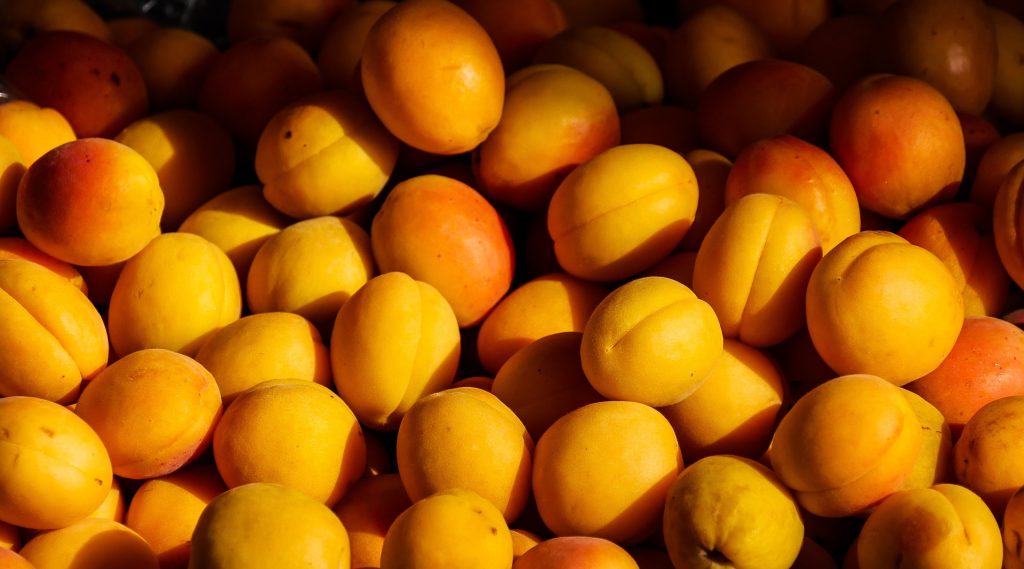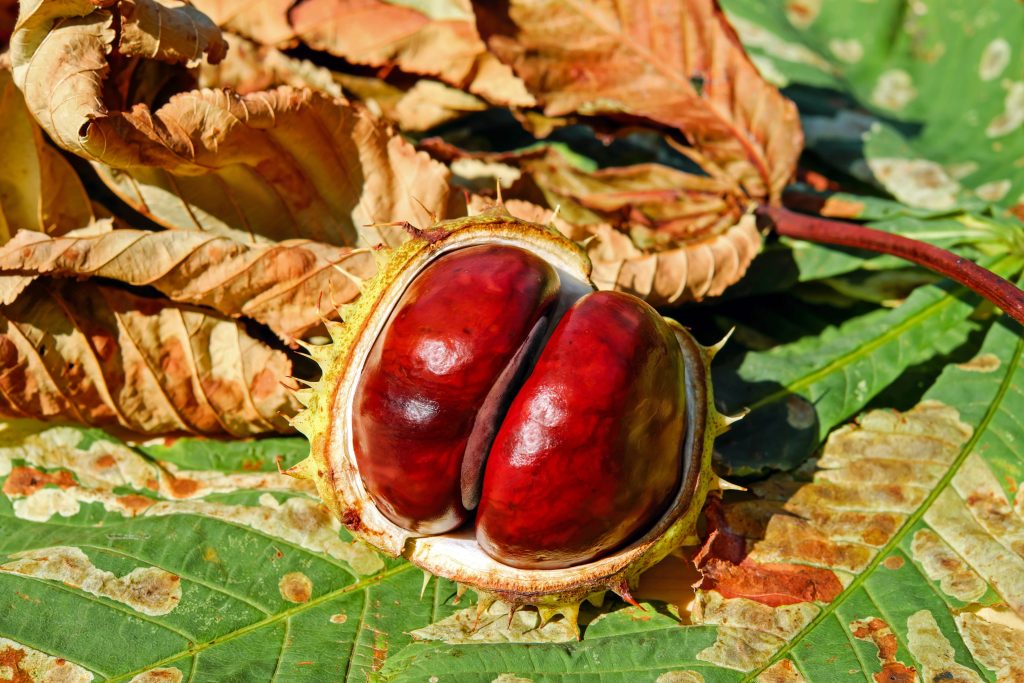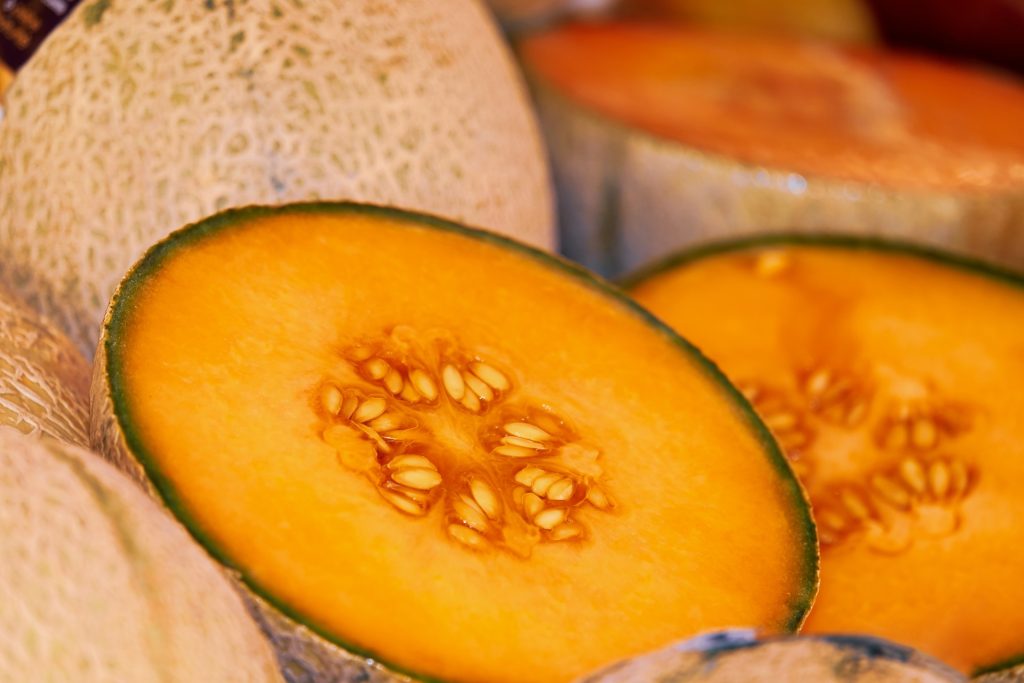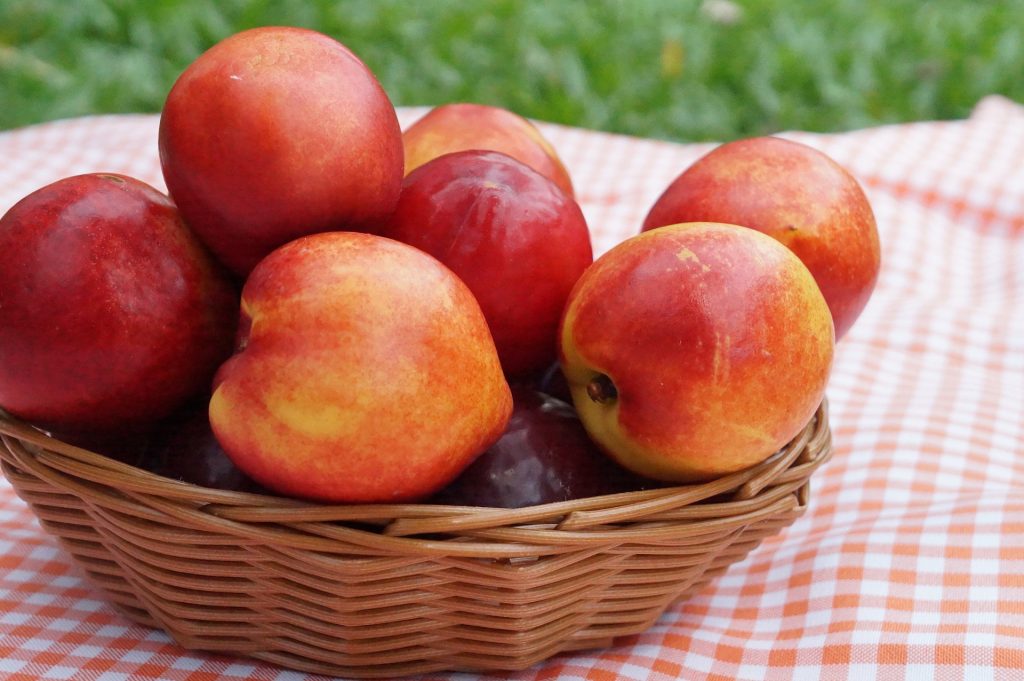Blog
Find articles that matter. From trading to shipping, trends to valuable goods, you can deep dive into everything you need.
Latest Posts
Blog
Official transactions and documents are of great importance for commerce as well as in all areas of life. Especially in export, documents are essential for the smooth and accurate functioning of the process. An important concept that exporters should know is the shipping manifest. In this article, we will define the shipping manifest in detail.
A manifest is a list of items shipped from the supplier to the final customer. The shipping manifest is not just a summary of the goods transported. It is a transport document containing detailed invoices of the products transported by the carrier by air, land, or sea transport.
The shipping manifest has various details given to the customs authorities. These details are information such as consigner, consignee, and number. Also, this document contains detailed information about the means of transport such as route and identification. Moreover, details of passengers and crew are included in the shipping manifest. It is important to have passenger and crew details to present to the customs department or other authorities. The shipping service provider is responsible for issuing a shipping manifest.
What Is the Purpose of the Shipping Manifest?
The most basic purpose of listing goods is to verify the number of boxes shipped. So, some information about the package is essential. These are the number of items, the type of package, and the recipient and sender information. Thus, this document identifies the goods that will reach the buyer.
Types of Shipping Manifest
There are different types of shipping manifests depending on the types of goods.
Cargo Manifest
The cargo manifest gives all information about the cargo, excluding freight charges. Quantity, type, sender, and destination are among the details of the cargo manifest.
Sometimes the cargo manifest can be confused with the bill of lading. A cargo manifest is a comprehensive list of all the items in a shipment. It has multiple bills of lading and cargo information on them. However, bills of lading may not be consolidated lists. Operators can create separate bills of lading for each customer.
The cargo manifest is quite significant for both buyers and sellers. It can also serve as a bill of lading. The bill of lading is a legal document confirming the title of the goods at a given time. The bill of lading usually gives the same details as the cargo manifest. Therefore, sometimes the cargo manifest serves the purpose of the bill of lading. However, if shipments belong to more than one company, companies must have separate bills of lading. If these companies have some dangerous cargo, they should also prepare a dangerous cargo manifest.
Freight Manifest
The freight manifest gives all the information about the cargo, including the freight charges. Either the shipper or the consignee pays the fees in the manifest. In other words, the cargo manifest contains details such as quantity and address. On the other hand, the freight manifest also specifies the freight charges for each shipment.
Dangerous Cargo Manifest
The dangerous cargo manifest lists hazardous goods and materials (HAZMAT). These are items or materials that could pose a great risk to people, property, and the environment. The United Nations has defined dangerous goods. Hence, it is an international standard term. The sender must classify dangerous cargo and specify it in detail. If the shipper does not provide the correct details, it is not possible to load dangerous cargo.
Reefer Manifest
Reefer is a kind of container. It protects cargo that is sensitive to extreme temperatures and temperature fluctuations. A reefer manifest contains details on refrigerated containers. These containers will arrive at different consignees. This manifest contains details such as the temperature and humidity settings of the reefer containers.
Out-of-Gauge Manifest
Gauge means abnormally sized cargo. Out-of-gauge cargo does not fit into normal packaging. This type of cargo also includes protruding items that require special packaging. Thus, an out-of-gauge manifest has details of the gauge cargo. Information such as weights and dimensions are among these details.
Import General Manifest
The shipper or carrier prepares the import general manifest. It is a list with shipping details. These details contain the information requested by the customs department of the importing country.
Container Manifest
The container manifest shows the contents and loading order of a container. It also contains information about the point of origin and the point of destination.
How to Prepare a Shipping Manifest?
There are specific guidelines for shipping manifests. It will be useful to examine the examples before preparing the document. Besides, there are shipping manifest templates available. When preparing the manifesto, you should pay attention to all the details you need to include. These details are as follows:
- Package quantity and type
- Document number
- Description of merchandise
- Number of items
- Recipient information
- Means of transport
- Route
- Sender information
This information is used for invoices and verification. The responsible party must prepare the manifest on the same day as the creation of the shipment.
Manifest Corrector
The shipping manifest is locked 72 hours after the items depart from the port of loading. However, customers sometimes request changes in shipping details. Manifest corrector is the way to make these changes. It indicates if there are any changes to the original bill of lading.
The carrier agent prepares this document at the port of loading. He then forwards it to the agent at the destination port. This agent delivers the document to the customs authorities at the destination. Nevertheless, the carrier agent will demand a fee for this process.
Automated Cargo Manifest
Port customs in some countries, such as the USA and China, require manifests through the Automated Manifest System. The responsible party must enter the details into this system within the specified time periods. Otherwise, authorities impose large fines for non-compliance with the rules of this system. There may be cases where shippers do not display the correct quantities of their cargo to avoid charges. If there are errors in the records, the authorities can seize the cargo. Thus, it's best to work with trustworthy shippers.
Your Cargo Is Safe with Turkish Goods
Turkish Goods complies with international standards and rules in the shipment of goods. We take pride in delivering the goods to you in the best possible way. Turkish Goods is the perfect solution for a successful shipment. For detailed information about our services, you can click here and contact us.
The cherry has been around for centuries and was first cultivated by the Romans, who used them to make their wine more palatable. Today the cherry, for the majority of people, is one of the most essential fruits of the summer season. With the exception of a few varieties of cherries used in industry, almost all cherries are eaten fresh, and this makes them an easy, healthy, and refreshing snack in the hot summer months. Cherries are used in desserts, juices, jams, and even in dishes made with red meat.
Cherries are rich in vitamin C, calcium, and iron, which can strengthen your immune system and reduce cholesterol levels. They also contain vitamins A, B1, B2, B3, B5, and B6 as well as potassium. In addition to these nutrients, cherries also contain antioxidants that help maintain good health. All of these reasons make cherries quite popular and in demand for importation from other countries. In fact, cherry export is a growing industry all over the world today. Cherry exports have grown by over 200% in the last ten years. It's an important industry that benefits the world in many ways.
Producing Cherries
The cherry production industry is a major agricultural industry, and the industry has been experiencing steady growth in recent years. There are various factors that contribute to the growth of the cherry production industry. These include improved technology, improved marketing techniques, and increased awareness about the benefits of cherries. Cherry production is an agricultural process that includes the cultivation of cherries and the harvesting, storage, and transportation of cherries.
Today, cherry production is done all around the world. Cherry trees grow in many different regions, but they are most abundant in temperate climates. The rate of cherry production depends on the type of cherry tree that is being cultivated. The most common types are sour cherries and sweet cherries. Sour cherries produce more fruit than sweet cherries because they grow faster. Cherry is one of the plants that require careful care. The cherry fruit, which has a very deep-rooted history, is harvested from April to July and the peak production season is June.
Moreover, all of this hard work makes importing cherries from other countries a profitable and significant thing that needs to be taken seriously. There are various countries that produce and export the highest amount of cherries to the world, and here are some of them!
Chile
With an annual production of about 156 tons of cherries, Chile is the fourth-largest producer of cherries in the world. However, due to strong demand from China, Chile is the world's largest exporter of cherries. In the 2020-2021 season, Chile exported more than $2 billion worth of cherries to the world, and about $1.5 billion of them were to China. Hong Kong followed China with $799.62 million. It is estimated that Chilean cherry production will increase by 11.5% in the 2021/2022 season. Consequently, export rates are also expected to increase.

The United States
With exports valued at about $479 million, the United States is the second-largest exporting country for cherries in the world. The majority of exports do not go to a single country; rather, the United States has multiple buyers for cherries. With $146 million worth of imports, Canada is the largest buyer, followed by South Korea at $118 million and finally, China at $57 million. It is no surprise that the United States is the second-largest exporter, as it is also the second-largest producer of cherries in the world. The United States produces about 312 tons of cherries per year.
Turkey
Turkey produces about 640 tons of cherries per year, making it by far the largest cherry producer in the world. This is due to the 210,000 hectares of land in the Şehzadeler district of Manisa and the Kemalpaşa district of İzmir, which are the oldest cherry-growing areas in Turkey. A large part of these cherries is exported, as Turkey is the third-largest country in exporting cherries. In the 2020/2021 season, Turkey exported $225.5 million worth of cherries. Germany is Turkey's largest customer with imports worth $90.64 million. With imports worth $51.78 million, Russia follows Germany and finally, Austria with imports worth $13.6 million.
Turkish cherries have reached 62 different countries as Turkey is the largest producer and produces high-quality fruit. With one of the largest supplier databases in Turkey, Turkish Goods is an unrivaled service provider for solution partners who want to import products from Turkey. If you want to import the delicious top-quality cherries in a safe and easy way, you can contact us now and get a price within 48 hours!
Greece
With 90 tons of cherries per year, Greece is the eighth largest producer of cherries in the world. It is also the fourth-largest exporter. In the last two years, Greece has increased its cherry production through more acreage and initiatives. In the 2020/2021 season, Greece exported $75.1 million worth of cherries, up 64.43% from the previous year. Germany was also Greece's largest buyer, with imports worth $23.96 million. Italy was the second-largest buyer of cherries from Greece, with imports worth $12.19 million. Italy was followed by the Netherlands with imports worth $9.74 million and Poland with imports worth $4.86 million.
Spain
Lastly, with exports worth about $65 million in the 2020/2021 season, Spain is the fifth-largest exporter of cherries in the world. Though export rates for the country have decreased by about 30% compared to the previous year, it still holds its place. Spain produces about 107 tons of cherries per year, making it the seventh-largest producer in the world. With exports worth $17.39 million, the United States was Spain's biggest buyer. The United States was followed by Germany with $10.91 million, Italy with $8.39 million, and France with $7.76 million in cherry imports.
Peaches are one of the most commonly consumed fruits in the world. They are a type of stone fruit that belongs to the genus Prunus. The nectarine is quite similar to the peach but has smooth skin, while the peach has a fuzzy one. They originated from China and were introduced to Europe by traders from Persia. Nowadays, they are grown on every continent with the exception of Antarctica. Today, peach production is a billion-dollar industry that has increased over the years due to its popularity and health benefits.
One of the World’s Favorite Fruits: Peach and Nectarine
Peaches and nectarines can be eaten fresh as well as used in a variety of jams, preserves, and foods. They are especially commonly used in desserts because they have a sweet, mellow flavor that adds a tart taste to dishes. The main benefits of peaches and nectarines are that they contain vitamin C and many other antioxidants that help protect cells from damage caused by free radicals.
Peaches are also high in fiber, which helps lower blood cholesterol levels. They are also a good source of folic acid and minerals such as copper, manganese, and iron. Both because of their many uses and health benefits, peaches and nectarines have become increasingly popular among consumers worldwide. As a result, the demand for peaches and nectarines has also increased. Today, many countries are importing peaches and nectarines from other countries. Here are the leading countries in the export of peaches and nectarines!
Spain
With an export value of $971.6 million, Spain is by far the largest exporter of peaches and nectarines. Spain is also the second-largest producer of peaches and nectarines in the world, with about 1.500 million peaches and nectarines produced each year. This is because Spain has the perfect weather conditions for the fruit, has fields specifically reserved for the production of peaches and nectarines, and has become a brand for these fruits. With a value of $331.92 million, Germany was the main destination for peach and nectarine exports from Spain last year. With $156.24 million, Germany was followed by France and Italy with $121.37 million.
Chile
Chile is the second-largest exporter of peaches and nectarines in the world. In the 2020-2021 season, Chile achieved exports of peaches and nectarines worth $266.2 million. Chile is the 8th largest producer of peaches and nectarines in the world. Although they produce much more than Chile, the United States is the largest buyer of peaches and nectarines from Chile, with imports worth $79.84 million. Other major importers of peaches and nectarines from Chile are China, with $67.25 million, and Hong Kong, with $50.27 million worth of peaches and nectarines.
China
With a production of about 15 million tons, China is by far the largest producer of peaches and nectarines in the world. They can even cover more than 50% of the world's production. This is mainly because peaches and nectarines are native to China and it holds a special place in Chinese culture. Since most Chinese peaches are for domestic consumption, China is not the world's largest exporter of peaches. Rather, it is the fourth-largest exporter, behind Spain, Chile, and Turkey. In 2020-2021, the country exported $135.2 million worth of peaches and nectarines. About $100.28 million of these exports went to Vietnam, China's neighbor.

Italy
Italy is right behind China and Spain in the global production of peaches and nectarines. With about 1,500 million tons of peaches and nectarines, Italy is the third-largest producer in the world, and this is reflected in its exports. Italy is currently the 5th largest exporter of peaches and nectarines in the world. Last year, peaches and nectarines worth $124.8 million were exported. With imports worth $48.95 million, Germany was the biggest buyer of peaches and nectarines from Italy.
The United States
The United States was once one of the top 3 exporters of peaches and nectarines. But over the years, as Turkey and Italy exported more and more, it fell behind. Still, it is the 4th leading producer and 6th largest exporter of peaches and nectarines. In the 2020-2021 period, the United States exported $124.2 million worth of peaches and nectarines. At $73.61 million, Canada was the biggest buyer of peaches and nectarines from the United States.
Turkey
Turkey is one of the largest producers and exporters of peaches in the world. The country's peach exports have increased by more than 50% in the last decade and now account for more than one-third of all global exports. It is currently the 3rd biggest exporter of peaches and nectarines in the world. Peach and nectarine production has increased significantly in Turkey over the years. Peaches are grown on an area of 2,500 hectares, and their annual production exceeds 2 million tons.
Moreover, Turkey produces about 1 million tons of peaches every year, about 40% of the total peach production in the world. The country has the largest share of peach production in the world, with an annual production of about 4 million tons or 10% of the world's total production. As one of the leading producers and exporters of peaches to Europe, North America, Asia, and Africa, Turkey achieved $153.3 million worth of exports in 2020-2021. 119.89 million dollars of these exports went to Russia, the leading importer of peaches and nectarines from Turkey.
Import Top Quality Peaches and Nectarines With Turkish Goods
If you want to import delicious and high-quality peaches and nectarines from one of the world's leading producers, Turkish Goods is here to help you every step of the way! With one of the largest supplier databases in Turkey, Turkish Goods is an unrivaled service provider for solution partners looking to import products from Turkey by finding strategic resources, controlling every aspect of the production process, and obtaining the most accurate price by leveraging the competitive power in the market. You can benefit from Turkish Goods' quality now by contacting us and receiving a price offer for high-quality peaches and nectarines within the next 48 hours!
Ever since the Second World War, the automobile sector has grown in importance across the world. However, due to the Coronavirus, motor vehicle output fell dramatically in 2020. In comparison to the over 92 million vehicles, trucks, and vans manufactured in 2019, less than 78 million were produced in 2020. A decline of more than 14 million, bringing the total back to how it was in 2010.
This decline, followed by ten years of continuous growth, fortunately, did not continue into 2021. In 2021, 79.1 million motor vehicles were produced worldwide, a 1.3 percent increase over 2020. And things seem to be on track for another growth period.
The outlook for the next ten years looks optimistic according to the “Global Automotive Market” report. The Global Automotive Market was 85.32 million units in 2020, and it is predicted to reach 122.83 million units by 2030, according to the research. From 2020 to 2030, the industry is predicted to increase at a CAGR of 3.71 percent.
East Asia, North America, and Europe continue to be the world's largest car-producing areas, with India, Brazil, and Thailand all producing substantial numbers of automobiles.
In today's post, we'll look at numerous facts, such as which countries manufacture the most automobiles and more.
China
China's automotive sector has been the world's largest in terms of vehicle unit output since 2008. China's yearly automotive output has exceeded that of the European Union, the United States, and Japan combined since 2009.
The country completed about 26 million motor vehicles in 2019. This accounted for around 28 percent of all automobiles and trucks manufactured. Approximately 83 percent of China's manufacturing was for personal passenger automobiles, with the remaining 4.3 million vehicles for commercial purposes. SAIC Motor Corporation is China's largest car manufacturer, with 6.2 million vehicles sold in 2019.
While the majority of automobiles made in China are sold within the country, exports totaled 814,300 units in 2011. China's domestic market provides a stable foundation for automakers. And Chinese economic planners intend to establish internationally competitive car companies that will grow more appealing and dependable over time.
United States of America
The automobile industry in the United States began forming in the 1890s. And quickly grew to become the greatest in the world due to the size of the home market and the use of mass production. The United States was the first country in the world to have a mass-market for car manufacturing and sales. Still, it continues to be a forerunner in the automotive industry and mass-market production process.
Global rivals arose throughout the twentieth century, particularly in the second half of the century. European and Asian markets such as Germany, France, Japan, and Korea showed themselves as competent players in the industry.
Despite manufacturing only 9.1 million cars and trucks in 2021, the US remains the world's second-largest automaker. The country has a market share of just under 12 percent. Despite producing fewer passenger automobiles than Japan or Germany, the country manufactured nearly twice as many commercial vehicles as any other country, including more than five times as many as Japan.

Germany
The automobile sector in Germany is one of the greatest employers in the world. It employs about 857,336 people according to the 2016 statistics.
As the birthplace of the modern vehicle, Germany's automobile industry is often recognized as the most competitive and inventive in the world. It is the third-highest car output and the fourth-highest overall motor vehicle production.
The country's automobile sector is now dominated by five German corporations and seven brands. These are Volkswagen AG (including subsidiaries Audi and Porsche), BMW AG, Daimler AG, Adam Opel AG, and Ford-Werke GmbH. Every year, about six million automobiles are manufactured in Germany, with German brands producing around 5.5 million abroad.
Spain
Spain is Europe's second-largest carmaker and the world's eighth-largest. In recent years, Spain's automobile sector has seen a fall in productivity. Despite this, the Mediterranean country is one of the world's top carmakers. It is second only to Germany among European countries, with 2.2 million units produced in 2020.
In 2019, 82 percent of automobiles made in Spain were exported to more than 100 countries. In 2019, 2,310,070 automobiles were shipped to overseas markets, with nearly two million exported to EU countries, and exports to non-EU destinations climbed dramatically.
The sector is critical to the country, accounting for 10 percent of Spain's GDP and 18 percent of total exports.
Turkey
Turkey ranks 4th in Europe and 13th in the globe in terms of vehicle manufacturing figures. This is all thanks to its strong and successful industry players. And when it comes to commercial vehicle manufacturing numbers it ranks 1st place in Europe.
Turkey is a significant manufacturing and engineering base in the global automobile industry value chain. With this strength, Turkey has the world's 15th biggest automobile sector, with an average export rate. In terms of manufacturing, export, and engineering for worldwide markets, Turkey is a center for global brands.
The Turkish automobile sector is mostly concentrated in a few cities: İzmit, Bursa, Ankara, İzmir, and Aksaray. Global automotive manufacturers profit from Turkey's ideal location and convenient transportation options. And they make significant expenditures to grow their manufacturing there.
The Turkish automotive industry, which has established itself as a production center of excellence, is now focusing on increasing its R&D, design, and branding skills. As of 2022, 191 R&D and design facilities are operated by automobile manufacturers and suppliers in Turkey.
Turkey has become the largest export base of global OEMs outside of the EU, with an average export rate of 85 percent. Furthermore, component exports have climbed by 13 percent in recent years in tandem with global changes. In 2019, total exports totaled 31.2 billion dollars. Almost half of this sum is derived from Ford Otosan and Oyak Renault exports.
Textile products and apparel are processed vegetable fibers that people have used for thousands of years depending on environmental conditions and cultural and economic changes. Depending on globalization and changes in the fashion industry all over the world, the choice of traditional clothing has changed greatly. There has been an increase in the frequency of changing clothes because both women and men follow the fashion trends and apparel sector more. Moreover, the sudden seasonal transitions force people to buy new clothes according to weather conditions. Even social media triggers people to show their new clothes.
While people are now buying more clothes than before, the variety of brands and products is also increasing. For exactly these reasons, countries that diversified their production took a step forward in the textile and apparel industry. Turkey, a market competitor to Asian countries that stand out in world textile and clothing exports, especially since the 1980s, increases sectoral competition. So, which are the countries that export the most textile and clothing in the world, and what are the current situations of these countries?
The History of Textile
The word textile is derived from the Latin word "texere " and means knitted fabric, fiber. Depending on environmental conditions and migration, the need for clothing has begun. Especially since the 20th century, with the use of dyestuffs in fabrics, modern textile and clothing technology has become increasingly widespread. People used animal skin as the first clothes, and then they produced clothes by using reeds and various grasses and producing straw weaves. Weaving activities, which first started in Anatolia, China, and India, started as wicker knitting and basketry.
With the use of silk spinning and animal wool starting from 4000 BC, fabric production is seen especially in China and Anatolia. The historical silk road is the most concrete example of this production and trade. In the Middle Ages, textile products created by using linen and cotton became more common. Especially in the industrial revolution that started in England in the 18th century, textile has been the most influential sector with steam power. Mainly with the cotton brought from colonized India, England directed world trade.
After the Second World War, the textile industry, which is more related to fashion, has become widespread in the world. Countries such as India, China, Vietnam, and Turkey have come to the fore with the redirection of production to the Asian continent.
Which Countries Dominate the World with Textile and Apparel Exports?
The global value of the textile industry, which was 920 billion dollars in 2018, is expected to reach 1,230 billion dollars by 2024. It is expected that the textile industry will be used more in other areas such as automotive, interior, and exterior decoration, especially with the use of non-woven fabrics and yarns. In other words, the textile and apparel sector will continue to develop by keeping up with new technologies. So, which are the countries that export the most textiles by increasing their production in the world? Let's get detailed information by examining these countries one by one.
Turkey
Turkey became one of the countries that made an attack, especially with the decrease in production in China and India due to the covid 19 epidemic. In 2020, the Turkish ready-made clothing industry ranked higher in the export ranking due to both its successful performance and the reduction of production by its competitors. Despite the 25 percent decline in exports in India, Turkey shrank by a limited rate of 3.1 percent, but changed its place in the ranking and rose to 4th place.
Especially the European Union countries' orientation towards Turkey as it is a close market has increased Turkey's exports. Following that Most of Turkey's exports in 2021 were made to European Union countries. In the January-April 2021 period, exports to Europe alone increased by 20.1% compared to the previous year and reached 3.4 billion dollars.
Turkey exports to approximately 190 countries in the textile and ready-made clothing sector. In the January-August period, the countries with the highest textile exports were Italy with an increase of 56 percent, Germany with an increase of 20 percent, and the USA with an increase of 51 percent. Turkey realized exports worth 11.8 billion dollars in the last 12 months on a sectoral basis. Together with the ready-made clothing industry, export of approximately 18.6 billion dollars was made at the end of the year.
In recent years, Turkey has increased its textile exports to countries and regions such as the Middle East, Russia, and Ukraine, especially to expand its market share. Especially the clothing stores opened in the Middle East and Asian countries increased the demand for Turkish textile and ready-made clothing products in these countries. Turkey has extremely diverse and internationally branded textile products, especially in women's, men's, children's clothing, and silk fabric trade.
India
There are two types of textile industries in India. The first is more traditional and small-scale production facilities based on handicrafts, while the others are modern production types based on ready-made clothing. Due to the chaotic situation caused by the Covid-19 epidemic in India, there has been a decrease in textile exports. Being geographically far from Europe and the USA, India, which is preferred due to its relatively cheap labor force and cost, directed these countries towards Turkey. India, the world's 5th largest textile exporter, exported $12.27 billion from April 2020 to March 2021. About 50% of India's exports are to European Union countries.
Vietnam
Vietnam recorded the biggest increase since 2020. According to World Trade Organization data, Vietnam's global share was 6.20% in 2019, while this rate increased to 6.40% in 2020. Vietnam, which remained behind Bangladesh until 2020, surpassed Bangladesh with this value. Vietnam exported a total of 29 billion dollars of textile and apparel in 2020. In this period, Asian countries, which were less affected by the covid-19 epidemic, took an advantageous position.
China
China is the world's largest textile producer and exporter with its manpower, cheap cost, and advanced textile raw material production. Thanks to chemical fiber production, China is a country that can make mass production and produces cheap products. Despite the pandemic, China increased its global market share from 30.80% in 2019 to 31.60% in 2020. In 2021, an increase of 8.4% occurred in China's exports compared to the previous year. From January-April 2022, China made a total of US$ 95.84 billion in exports, an increase of 8.65 percent compared to the same period of the previous year.
Top Quality Textile and Apparel Products from Turkey to the World
Continuing all processes from production to transportation by considering human health as the top preference in clothing imports. In this regard, you can buy clothes that do not harm human health with the assurance of Turkish Goods. No matter where you are in the world, Turkish Goods delivers the best quality and suitable textile products for children's, men's, women's clothing, and silk fabric types.
Summer vacation is an activity that many people dream of and start planning ahead of time. Destinations, budget, tickets, and the items you will take with you are included in your summer vacation planning. Summer travel essentials are of great importance to make your summer vacation more enjoyable and comfortable. So, what kind of "life-saving" products are needed for a summer vacation? Which products should you import?
What are Summer Travel Essentials?
It is as important for every person to have a pleasant and comfortable vacation as it is to have a vacation. Although transportation facilities are highly-developed today, you can manage your holiday more easily with the travel products that will accompany you on your summer vacation. We can list the essentials that you should have with you on your summer vacation as follows:
- A useful suitcase
- Sunscreen
- Other cosmetic products (cosmetics, moisturizers, etc.)
- Beach items (hat, beach towel, slippers, and sunglasses),
- Medical kit
- Charger
- Portable power bank
They are the essentials that are both needed and have the effect of saving the holiday. Let's take a closer look at these products, and let us help you determine the products you wish to import.
Suitcase
The suitcase is undoubtedly one of the most important holiday essentials of summer. The suitcase, which you can choose in various sizes, can help you spend your summer vacation quite efficiently. You can start by choosing the size of your suitcase for your needs and the number of days you will stay. It would be good for you if your suitcases are suitable for airport transportation. Moreover, it can be resistant to impact and have more compartments. You can also choose suitcases made of light and durable materials that you can carry and lift easily.
If your luggage is not lost or stolen, you can choose suitcases with encrypted access. If you are considering a long stay, you can choose checked suitcases or carry-on suitcases. For a shorter trip, a duffel, travel backpack, or weekender bag can be preferred. If you are traveling for business, you can bring a separate laptop bag for your computer.
Sunscreen and Other Cosmetic Products
Sunscreen and other cosmetic products are among the most needed items during the summer holidays. It is very important and necessary for your health both before swimming and sunbathing. In addition to protecting your skin from the harmful rays of the sun, it also reduces the pain of sunburns on your skin.
Other cosmetic products are more geared towards meeting your daily needs. For example, you can choose travel-size products for shampoo, shower gel, and soap that you will use in the shower. Your hair may be damaged during the summer holidays due to frequent swimming and hot weather. To prevent this from happening, it is useful to take your regular hair conditioner with you.
Moreover, you could bring deodorant and fragrant perfumes with you in case you feel smelly. If you want to apply make-up before going to have fun, you should put your make-up items in your suitcase. If you wish, you can have a more organized holiday by carrying make-up materials in your bag. Moreover, you can easily find the products you are looking for.

Beach Items
It is vital to go to sunbathe on the beach and enjoy nature and historical places during the summer vacation. While doing these activities, hats, sunglasses, and beach towels will be the items you will need the most. Hats will protect you from the sun while sunbathing and allow you to reflect your style as a stylish accessory. In addition, a hat is necessary for long nature walks in order not to be affected by the sun.
Sunglasses, as the name suggests, will protect your eyes from sunlight and make you comfortable. You can wear sunglasses especially while sunbathing on the beach or walking around. Moreover, you can wear sunglasses at dinner by combining them with your other clothes. The beach towel, on the other hand, has the function of protecting your back when you both dry and lie on the sun lounger after swimming. You can choose beach towels from colors that are made of cotton fabrics that will not make your skin sweat and that will not stain easily.
Beach slippers can be used both to walk more comfortably and prevent damage to your feet by thorns and small stones on the beach. You should check whether your beach slippers are non-slip soles and flexible or not.
Medical Kit
Although our holidays are pleasant times, sometimes undesirable health conditions may arise. If the location you are in is far from a health institution, you should have a medical kit with you. Basic first aid supplies, hygiene items, and face masks can be found in the medical kit. In addition, if you have a chronic disease, you should have your medications with you. Sanitizer and gloves against infectious diseases, especially Covid 19, can also be found in the medical kit.
Chargers and Portable Power Banks
In the digital age we live in, communication and social media have become almost as important as daily needs. Although we are away from work and digital life on vacation, we also need phones during vacation for communicating with our loved ones, social media sharing, and instant status notifications. At this point, chargers are very important. Before leaving the hotel room or your stay, you should make sure that you fully charge your phone. If you are going to be on the beach or on a tourist trip from morning until late, it may be useful to take a power bank with you.
We Deliver the Products Needed During the Summer Holidays with the Assurance of Turkish Goods
As Turkish Goods, we offer a wide range of products in the areas we operate. We deliver the best quality products to you with the best price options. Wherever our customers are in the world, we provide them with a price guarantee for the essential products needed for a summer vacation.















